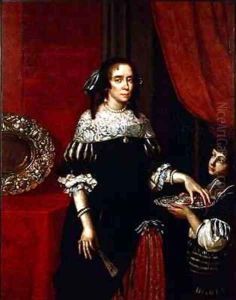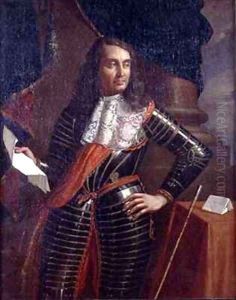Benedetto & Cesare Gennari Paintings
Benedetto Gennari and Cesare Gennari were Italian painters of the Baroque period, both hailing from a family with a strong artistic tradition. Benedetto Gennari was born on October 19, 1633, in Cento, a town in the Emilia-Romagna region of Italy, and died on December 9, 1715. His younger brother, Cesare Gennari, was born in 1637 in the same town and passed away on February 11, 1688.
Benedetto and Cesare were the sons of the painter Ercole Gennari the Elder and nephews of Guercino (Giovanni Francesco Barbieri), a prominent and influential Italian Baroque painter. Growing up in such an artistic environment, both brothers were inevitably drawn to the profession. They were trained by their uncle Guercino, whose influence is markedly visible in their work. After Guercino's death in 1666, the brothers continued to run his workshop.
Benedetto is known for his religious works, portraits, and mythological scenes. He became particularly noted for his refined and elegant style, which embodied the transition from the robust dynamism of the High Baroque to a softer, more graceful approach that anticipated the Rococo. His works are characterized by their delicate coloring and graceful figures. Benedetto spent a significant part of his career in England, where he worked as a court painter for Queen Catherine of Braganza, the wife of King Charles II. This period was quite successful for him, and he became well-regarded in the English court.
Cesare's work closely followed the style of his uncle Guercino. His oeuvre includes religious paintings, altarpieces, and frescoes. While he was a competent painter, Cesare did not achieve the same level of fame as his brother Benedetto. Nevertheless, he contributed significantly to the maintenance of the artistic legacy of Guercino through his work and the continuation of the family workshop.
The Gennari brothers' contributions to the world of art during the Baroque period were significant, particularly in preserving and promoting the style of their uncle, Guercino. Their works can be found in various churches and collections, primarily in Italy and England, testifying to their skill and the esteem in which they were held by their contemporaries.

